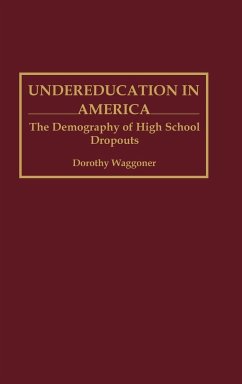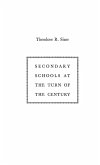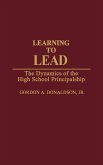.Who are the majority high school dropouts? They are neither the poor nor members of minority groups. Rather they are native-born white youth from homes in which only English is spoken and with incomes above the poverty level. However, minority and poor youth are more likely to be undereducated, and minority youth are more likely to be poor. Undereducation in America provides the most up-to-date and comprehensive examination of the high school dropout problem available today. It examines the numbers, rates, and characteristics of undereducated young people among white majority; African American; Hispanic; American Indian, Eskimo, and Aleut; Asian and Pacific Islander youth; and among non-Hispanic language minority whites. Having a non-English language background is not necessarily an educational risk factor of itself for dropping out of school. Dr. Waggoner finds that American schools are failing all youth, but she finds American Indian, Eskimo, and Aleut youth are the most likely of all native-born youth to be undereducated. Most of the much-noted disparity between the dropout rates of Hispanic youth and the rates of other groups is due to the limited education of many Hispanic immigrants, who constitute less than 30 percent of the entire group. The findings of Undereducation in America provide a guide for policy makers, school administrators, researchers, community groups, and others seeking solutions to the problems of educating school populations that, increasingly, are culturally and linguistically diverse.







